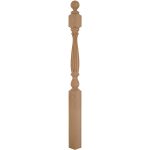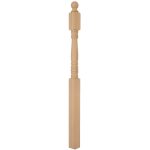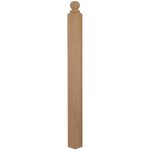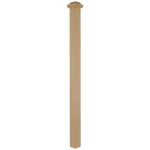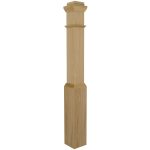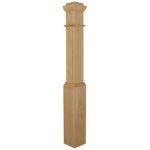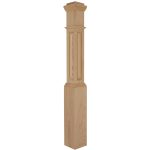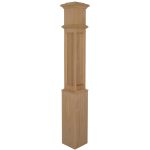Upon selecting the body size of a newel post, care should be taken not to over-indulge the stairway with an inordinately oversized newel. A rule of thumb to follow is to size the stairway’s starting newel to a maximum of one-eighth of the width of the stairway. Include the starting step in the calculation only if the newel is positioned on the outboard edge of the starting step. Subsequent newels may be, and should be, downsized if the starting newel has been sized to the maximum.
Turned post-to-post newels are commonly manufactured with three different top block heights, which are an additional element of the newel’s type. The purpose of the variation in top block height is to eliminate the need for intersection or transition goosenecks. The top block heights are approximately six inches for starting newel and landing newel types, ten inches for the transition newel type, and fifteen inches for the intersection newel type.
Sometimes, the preference is to employ goosenecks in a post-to-post balustrade. In those cases, newels with 10″ and 15″ top blocks should not be used.
Newel posts are further classified according to their architectural style. In general terms, all newel posts can be classified as either traditional or contemporary.
Upon selecting the body size of a newel post, care should be taken not to over-indulge the stairway with an inordinately oversized newel. A rule of thumb to follow is to size the stairway’s starting newel to a maximum of 1/8 of the width of the stairway. Include the starting step in the calculation only if the newel is positioned on the outboard edge of the starting step. Subsequent newels may be, and should be, downsized if the starting newel has been sized to the maximum.



